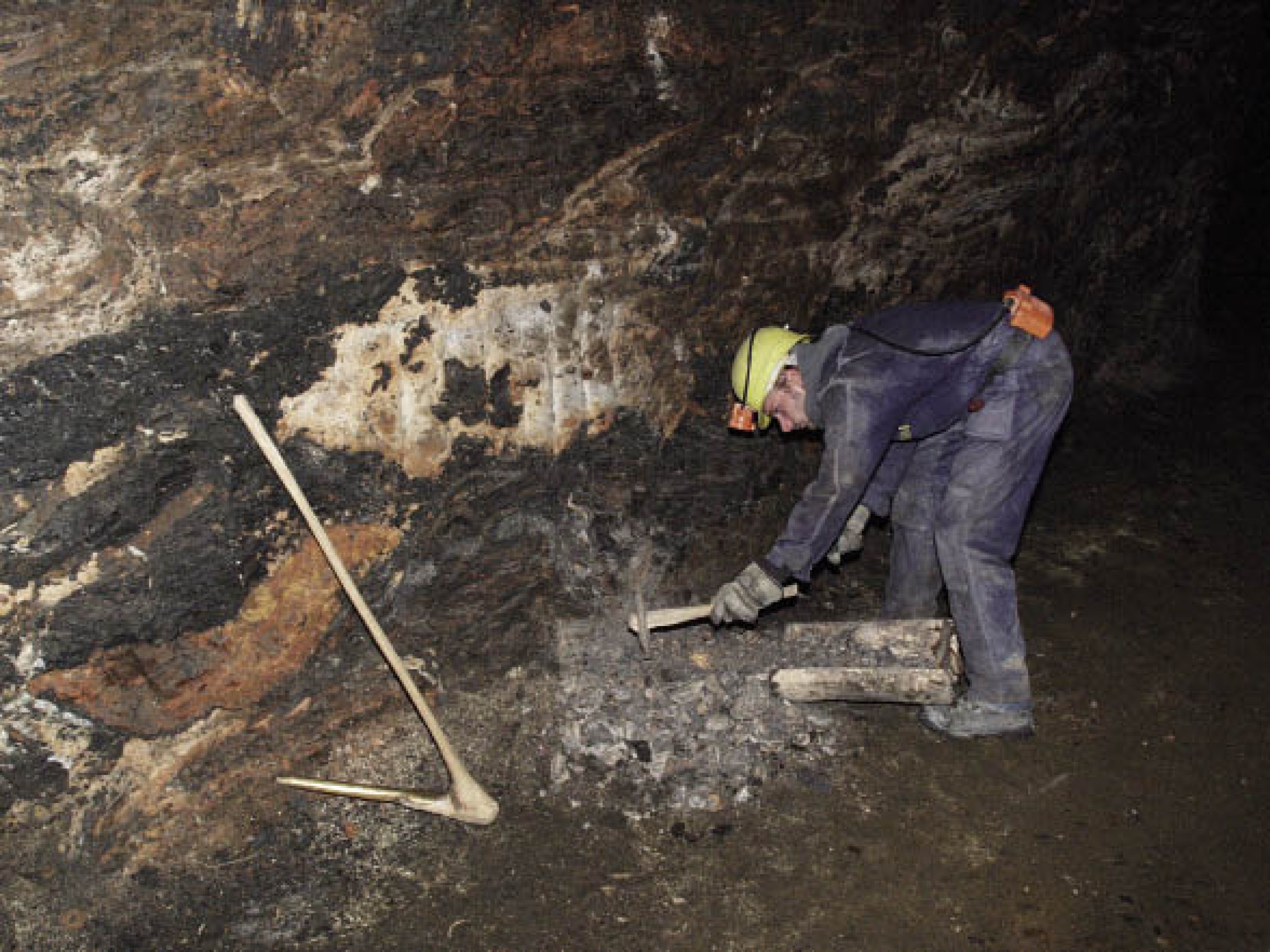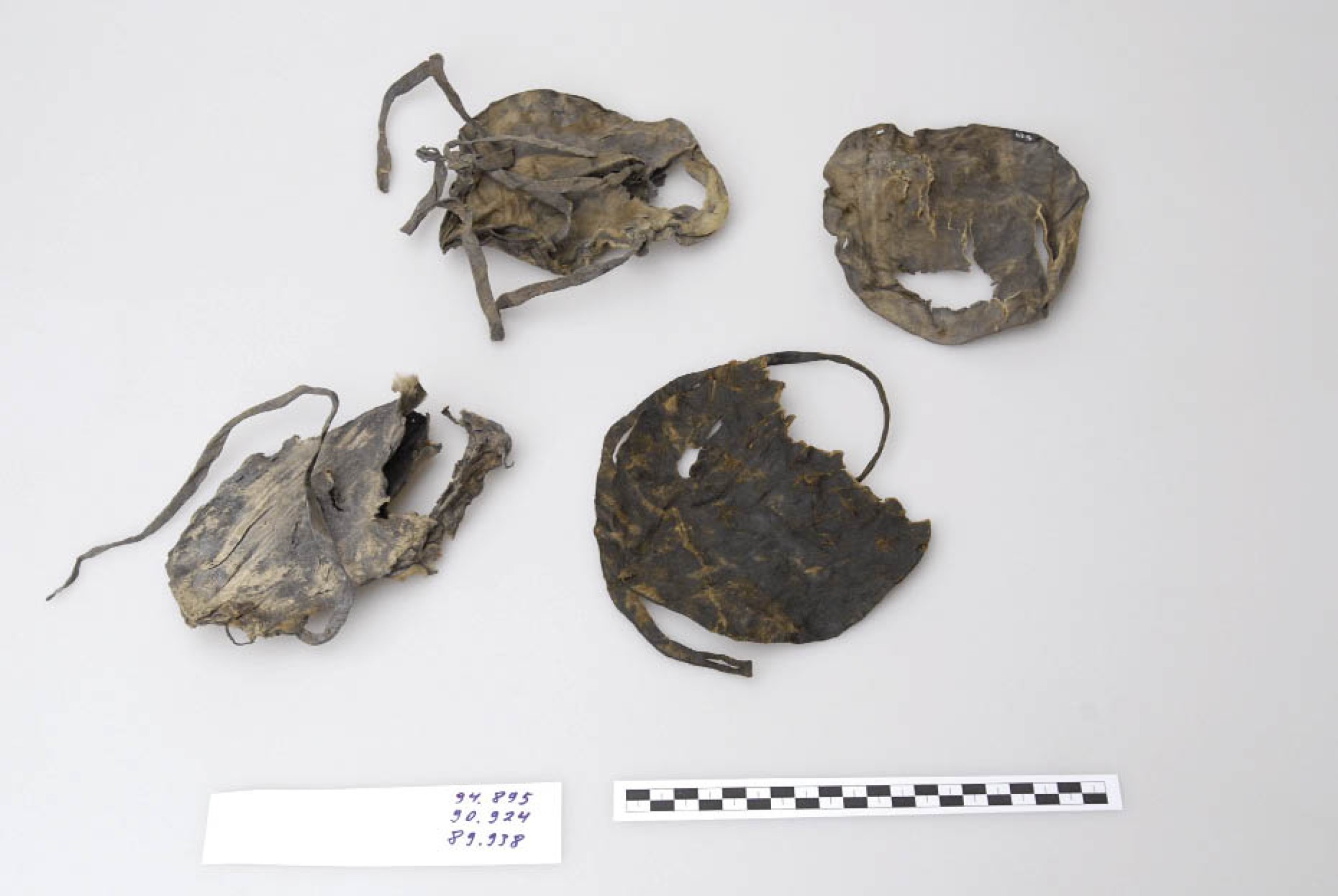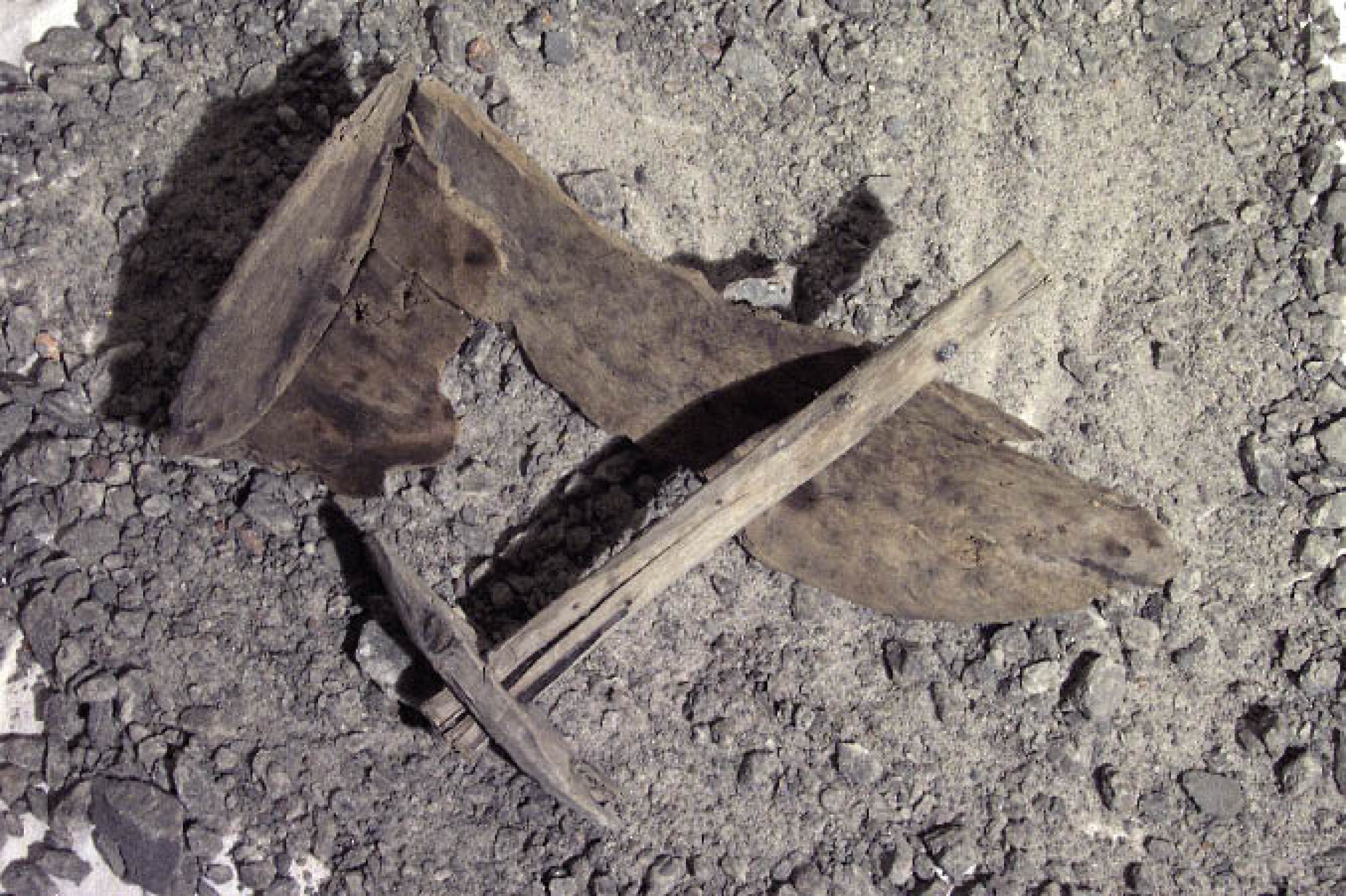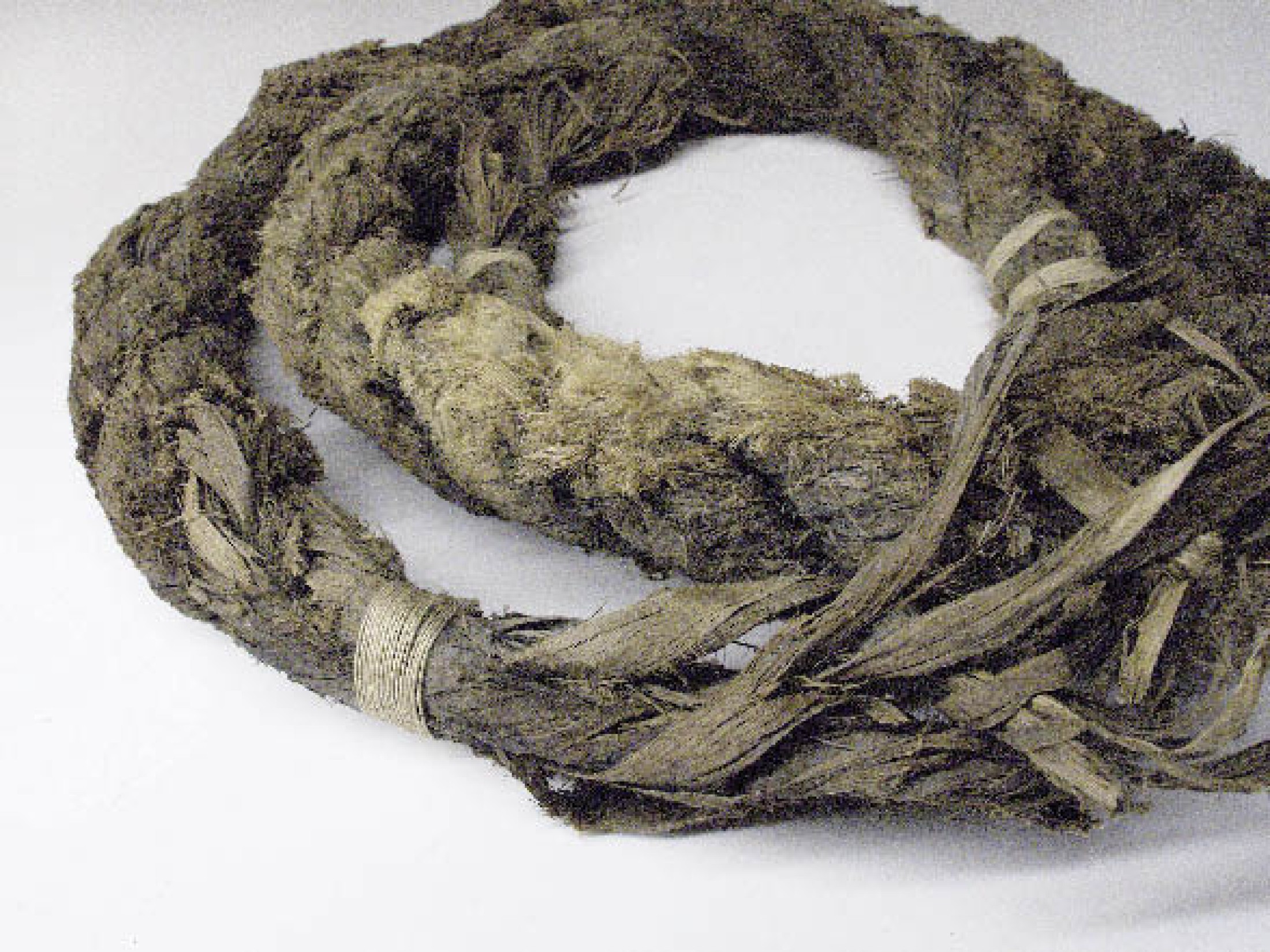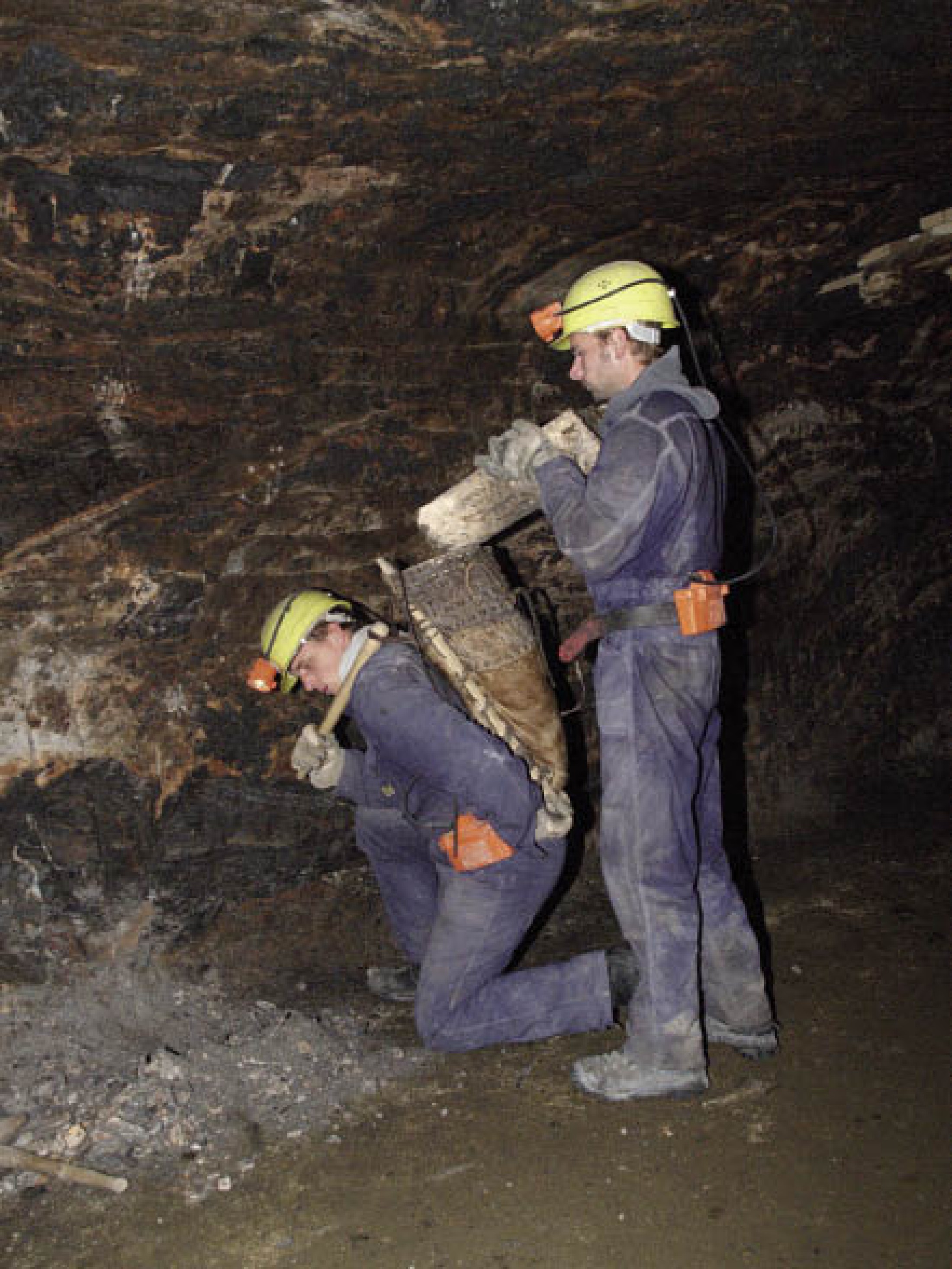Transporting salt to the surface
Salt was gathered together and placed in carrysacks to be transported to the shafts. Once there it was taken out of the carrysack and placed into another sack made of wool. This was then pulled up to the surface on a rope.Function of tools
Filling location and ropes
Function of tools
There were several stages in the route the salt took to the surface. First, worked salt had to be collected, using wooden shovels, scrapers and filling-trug. The salt was then transported upward in backpack carrysacks made of animal skin. A wooden shovel was used to scoop the worked material directly into the carrysacks. When the filling-trugs were used, the scraper conveyed the material into the trug, which then had to be emptied into the carrysack. One such carrysack could carry up to 30 kg. Since carrysacks have only been found in association with shovels, a proven connection between them and the trugs and scrapers has not yet been documented, but their combined use is probable. Salt was transported in the carrysacks from the work face to the shaft bottom, from whence it was hoisted to the surface.Filling location and ropes
The collection and conveying technique described here was perfectly suited to small grade material. Substantial flights of wooden stairs served to connect the inclined mine levels and facilitated movement over the spoil-covered gallery floor. The salt was finally hoisted to the surface using ropes, and it had therefore to be transferred into containers better adapted to this type of transport. This was done near the shaft bottom. The site found in the Christian von Tuschwerk might well be such a place. Typical finds there include pieces of thick woollen fabric, a thick rope, leather palm protectors and protective finger stalls. On the basis of these finds, archaeologists have tried to reconstruct the way that the salt travelled from the shaft bottom to the surface. Scraps of coarse, densely woven woollen fabric suggest that the salt was transferred into woollen sacks to be hauled up by rope. Since no complete sack has yet been found, we do not know anything about their size or volume. Although we have no information on how they were attached to the ropes, we have good information on the ropes themselves. Some years ago, a 4 cm thick rope of lime bast was discovered in the Christian von Tuschwerk, with a break strength in excess of one tonne (1000 kg). We do not know how long the rope actually is:after running several meters it disappears into the Heidengebirge. Presumably it does not reach the surface, and we assume that loads were not hoisted to the surface on a single pitch, but via several stages from one level to another. Palm protectors and finger stalls are among the typical finds from the Christian von Tuschwerk. They presumably served to protect miners when hoisting the rope.(Reschreiter, H. – Kowarik, K. – Loew, C.)

